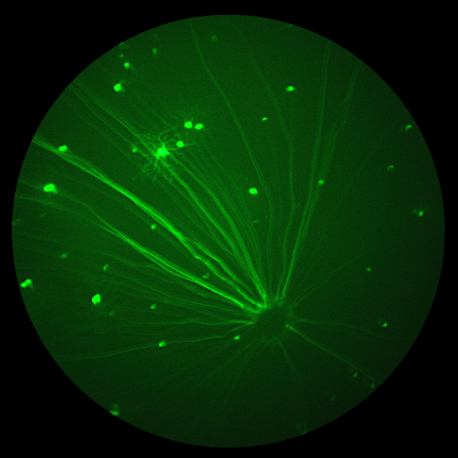In the paper “The impact of obesity‑related raised intracranial pressure in rodents” published in Scientific Reports journal, Westgate and collaborators used the Phoenix MICRON® image-guided OCT system, along with the Phoenix MICRON® Insight software, in the measurement of the retinal anatomical changes caused by intracranial hypertension in obese rats. The Problem: Intracranial pressure (ICP) measures the […]
13.10
2022
Where do research ideas come from?
Where do research ideas come from? Do they arrive in a thunderbolt eureka moment, or do they start as an observation or hunch, requiring some time to simmer, brew, incubate and grow? Some may evolve from an accidental or serendipitous discovery during a routine process. Observant operators of the Phoenix MICRON® retinal imaging system may […]
28.02
2022
Analysis of imaging, structure and function using Phoenix MICRON™ modalities expand the understanding of ocular features of Down Syndrome in mouse models
In their paper “Quantitative Analysis of Retinal Structure and Function in Two Chromosomally Altered Mouse Models of Down Syndrome”, researchers Victorino, Scott-McKean, et al leveraged the multi-modality capabilities of the Phoenix MICRON™ retinal imaging platform, to produce an image-rich research paper looking at the ocular features of Down Syndrome in two mouse models; Ts65Dn and […]
19.01
2022
Deep learning provides unbiased evaluation of uveitis severity levels in 1500 Phoenix MICRON® mouse fundus images
In 2020, researchers Jian Sun, Xiaoqin Huang et al, in the Laboratory of Immunology at the National Eye Institute, confirmed in the lab what has been going on in human ophthalmology in recent years, but with a twist. Their deep learning model enabled identification of retinal disease stages with noteworthy accuracy. What marked their work […]
29.11
2021
Phoenix MICRON Spins out of Phoenix Technology Group to Better Serve Eye and Eye-Brain Researchers Globally
Bend, OR, USA, November 29, 2021 — The newly formed company, Phoenix-Micron, Inc., announced today it has completed the spin-out of the Phoenix MICRON® imaging platform from Phoenix Technology Group. This move is designed to increase focus and innovation in products designed to serve the eye and eye-brain research community. The new company, Phoenix-Micron, Inc. […]
19.10
2021
Cataracts caused by lens protein knockout imaged using the Phoenix MICRON® IV Slit Lamp
In their article, “CRYβA3/A1-Crystallin Knockout Develops Nuclear Cataract and Causes Impaired Lysosomal Cargo Clearance and Calpain Activation,” Hegde et al use the Phoenix MICRON® IV Slit Lamp to examine the effect of knocking out a lens structural protein. α, β and γ crystallins are lens structural proteins that are needed for transparency and refractive power […]




